What are Kombu (Kelp), Dulse, Wakame, and Nori? Here is a guide to sea vegetables for those who want to add more seaweed to their diet.
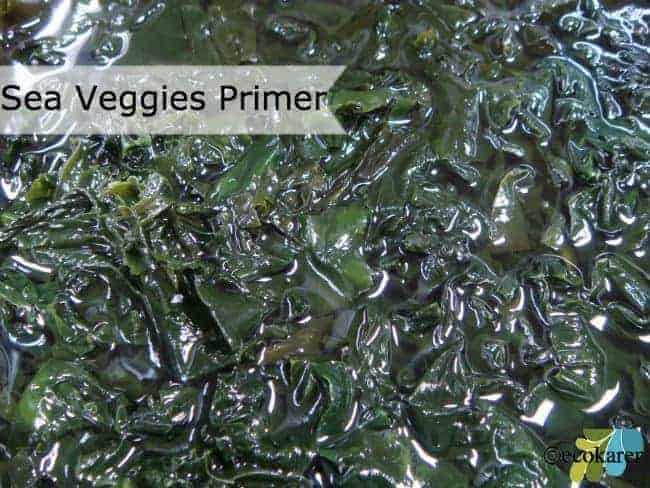
Intro
Seaweed For Breastfeeding
I've been cooking with seaweed or sea veggies all my life. When I was nursing my newborn son, seaweed soup was all I was "allowed" to eat, for nursing, for months. Six months to be exact. No lie. I got so sick of it that when my son weaned, I didn't eat Seaweed Soup for three years ... until I had my daughter. And then I had to start all over again.
So what's so great about this slimy, slippery, peculiarly brownish green veggie from the sea that it's all I needed to sustain myself and my newborn son for six months? I mean, he did look like a little Buddha when he was nursing so I assumed he was getting big and healthy, despite my weird diet.
I asked my mom repeatedly, when she kept shoving me the soup to eat at meals, why seaweed? All she can say were,
"It's good for you. For your milk. Just eat." (Insert frown here, like, I dare question her again.)
Geeeez....thanks Mom.
I bet she really didn't know why but she knew enough for her to insist it as being my staple food for the benefit of the nursing baby.
And, ironically, Seaweed Soup is what we eat on birthdays too. Again, I don't know why but I'm guessing moms, as sneaky as they are, want their kids to start the new year right with nutritionally packed foods like Seaweed Soup. Sometimes, it's just easy to follow what your mom says than to argue. Trying to set a good example for my kids here.
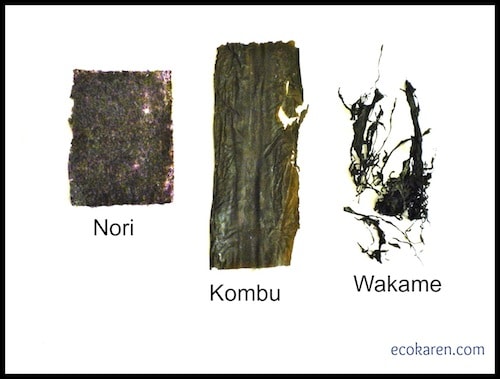
Sea Vegetables Guide
What are sea vegetables?
Sea vegetables are different types of edible seaweed. They include nori or Gim in Korean, kombu or Dashima in Korean, wakame or Myeok in Korean and dulse flakes,. (Amazon affiliate links)
Sea veggies are chockfull of chlorophyll, mineral, iodine, and dietary fiber. They add salty flavor to foods with a combination of sodium, potassium, calcium, phosphorus, magnesium, iron, and many other trace minerals naturally found in the ocean.
Keep in mind that when cooked, dried sea veggies will double in size and volume.
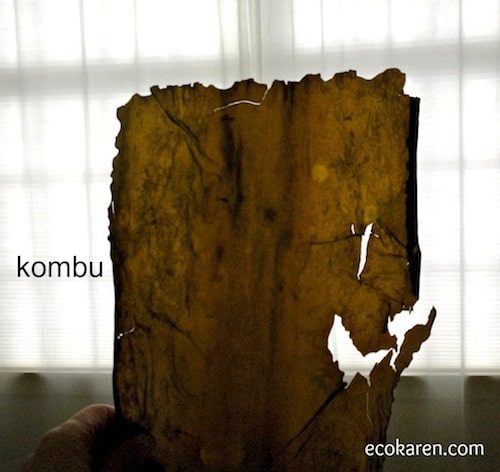
Kombu
Most kombu are harvested from Hokkaidō, Japan but Korea (dashima in Korean), and China (haidai in Chinese) also harvest this mildly salty and umami rich vegetable from the sea.
If you are concerned with radiation from Fukushima, Eden Foods, #1 importer of Japanese foods assures us that their kombu is not contaminated. In fact, they inspect all the foods they import from Japan repeatedly along the way to check for radiation.
Known as kelp in English, kombu is harvested from the coast of Maine as well. Kombu contains glutamic acid which is the basis of monosodium glutamate, or MSG, which enhances flavor and tenderizes proteins. Some people swear by cooking beans with kombu to make beans more digestible.
How To Cook Kombu
Dried strips are often covered with a white powdery natural salts. I usually rinse briefly and soak, just to get any debris off of the surface but I don't wash it too long so to keep the nutrition intact.
I keep kombu in an airtight container in a cool dark cupboard and it keeps for a very long time. Unfortunately, all the dried sea veggies come in plastic packaging since they travel from Japan or Korea but as soon as I bring them home, I cut them up in sizes I need and store them in large glass jars.
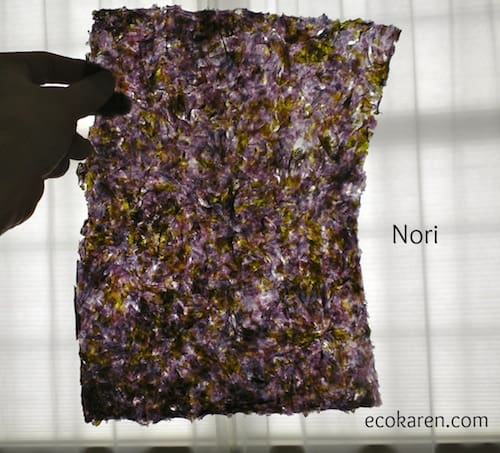
Nori
This popular sea vegetable called Nori (Japanese) or Gim (Korean) is typically used to make sushi rolls, i.e. California Rolls.
This thinly rolled out sea veggie sheet is dark purple, green, and brownish, depending on the type.
It's available toasted or plain. Some are seasoned with sesame oil and salt for wrapping in rice or lately, snacking.
It contains both iodine and vitamin C so you can use it as a condiment for rice, soups, salads, casseroles or grains either crushed into flakes or cut into strips.
How To Prepare Nori
The most common way to use nori is in making sushi rolls. And seasoned seaweed snacks!
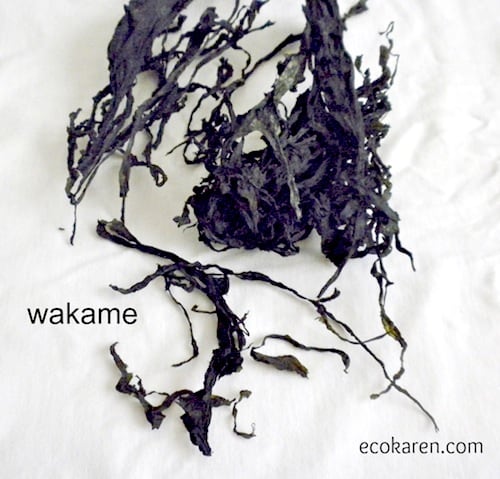
Wakame
Pronounced wah-ka-may, this light to dark stringy green wakame is the tenderest of them all.
It has potassium and adds fiber to your diet. After soaking it for about 10 minutes in water, wakame expands up to six to eight times its original size. After being soaked then cooked, long strands become really silky and tender.
You can eat it raw as a salad or make seaweed soup.
Dulse
I don't have a picture of dulse as I don't buy it as often as other kinds. But this sea vegetable is reddish-brown, full of potassium and protein, and available in whole stringy leaves or powdered as a condiment.
It's chewy in texture and has a slightly salty taste.
How To Eat Sea Vegetables
Now that you know what it is, here are my favorite ways to eat all the different kinds of sea vegetables.
Seaweed "Wakame" or Myeok Soup
New mom's superfood for energy, detoxifying, and the nursing baby. It's also a classic birthday meal in Korea, this soup is packed with minerals and vitamins. Easy to make, and a "go-to" soup when you want light and very clean tasting soup.
Vegetarian Broth
It only takes about 20 minutes to make vegetable broth with kombu. I make light broth for soups like Miso soup, Udon noodle soup, and tofu soup.
To make one quart of broth, I use about 4 cups of water and about 6" strip of kombu. When the broth comes to a boil, boil a few minutes longer, then, take out kombu. I normally just eat kombu as I'm taking it out but you can shred it for salad toppings or use it in soups.
Make Sushi Roll
Use nori to make sushi roll or California roll. I use whatever vegetables I have to make these easy sushi rolls for lunch.
I even use kimchi inside for extra flavor. You can use long strips of cucumber, pepper, avocado, or whatever strikes your fancy. Season cooked rice with Mirin (rice vinegar) if you want or you can skip it. You can season the rice with salt, sesame oil, and sesame seeds.
Dashi (vegetarian) or Bonito Dashi
I sometimes add bonito flakes - dried fish flakes - to kombu to make a Japanese broth called bonito dashi to make miso soup for extra flavor. I also use it to make Udon, Japanese noodle soup.
Softening Beans
I learned about this from Anna from Green Talk. She said she uses kombu when she cooks beans. I never heard that before but supposedly the amino acids in kombu help soften beans and make them more digestible. Easily digested beans mean less gas. I'll try that next time.
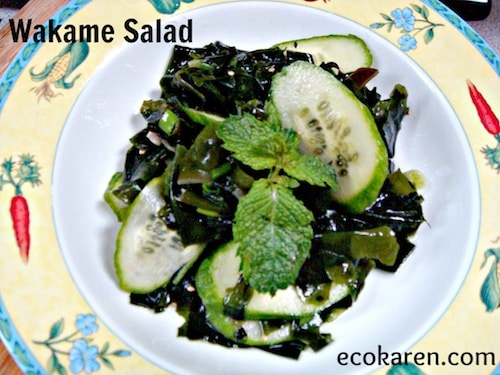
Wakame Salad
Here is my favorite summer salad that always fills me up. Easy to make and cold and refreshing.
On Salads
As mentioned above, you can shred cooked kombu after you make your broth and top your green salad for extra flavor and nutrition.
As a condiment
You can roast Nori in a dry skillet over medium heat until crisp. Crumble or grind it into a powder and use it as a salt substitute. Sprinkle it over rice, tofu, and vegetables.
We use this on top of raw tofu season with soy sauce. You can eat cold tofu or steam before adding nori flakes.
Biofuel
I don't recommend you try this in your kitchen but seaweed is used to make biofuel when combined with genetically engineered E Coli. E. Coli digests seaweed and releases ethanol to make fuel. How awesome!
So, try eating any of these incredible sea veggies. If it's great to be used as a body wrap, you know it'll be better eaten, just like any other foods they tend to use on bodies these days. You can buy them at any Asian stores. Or, you can order from Amazon.
➡️ Subscribe to our YouTube Channel for more recipes and tips. And follow @drkarensle on Pinterest, Facebook, Instagram and say "Hello!" 👋
💌 I would love to receive more posts like these in my inbox! SIGN ME UP for FREE newsletters!

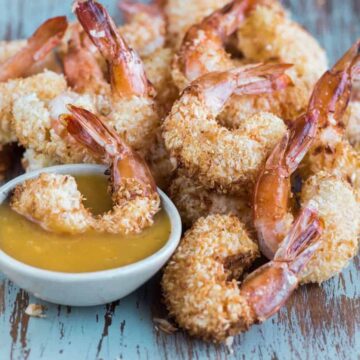
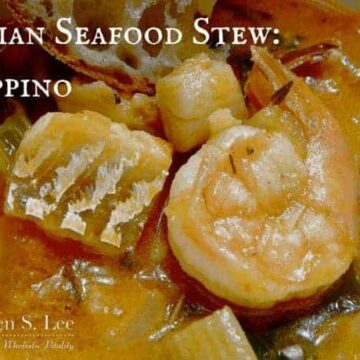
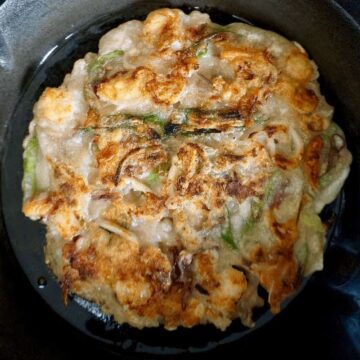
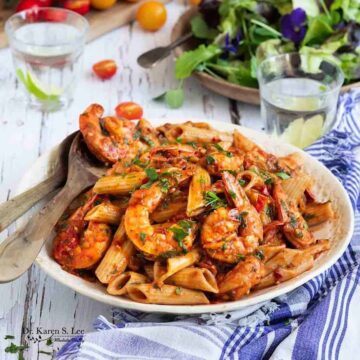
Linda says
I loved the idea of sea vegetables with miso soup and noodles. As I am diabetic, which noodles would be less likely to spike my blood sugar? I've been told to stay away from white noodles!
Dr. Karen says
You can use sweet potato noodles. Like this one. http://amzn.to/1KQVQoh
Starchivore says
Thanks for the primer. I was trying to figure out what kind of seaweed I bought from my local Asian market (turns out it's nori - the purple kind).
I've read that kelp may contain too much iodine. There's this study: http://www.ncbi.nlm.nih.gov/pmc/articles/PMC1924637/#!po=41.6667. Some more info here: http://nutritionfacts.org/video/avoiding-iodine-deficiency-2/. Have you ever heard that Karen?
Ronnie says
I was told to eat more sea veges by an acupuncturist. Said it helps with inflammation. I love seaweed - had a hijiki salad this weekend. Thanks!
Karen Lee says
We live on sea veggies. We do eat it at least once a week!
There are so many types of sea veggies but I never heard of hijiki so I just googled. Wiki says it may contain inorganic arsenic. Did you ever hear that Ronnie?
CelloMom says
Sea vegetables are all stuffed with all sorts of good stuff like iron and vitamins. And iodine, that which so helps out people with thyroid problems, like many (peri)menopausal women. As long as I eat my sea veg, I sleep well, don't have hot flashes, and keep my hair on my head. And it's tasty: what's not to love?
Karen Lee says
My mom never told me to use sea veggies for hot flashes! But it makes sense! It is filled with all kinds of goodies!
Ha! There is one thing my mom might not have not known! Thx!
Linda Everett says
I LOVE kombu. My hubby used to make us a delicious miso soup with kombu and noodles, with lots of veg. It's been awhile since we've had that and now I'm craving it again!
Karen Lee says
Kombu + Miso + Noodles +Veggies = heaven!
I can live on this!